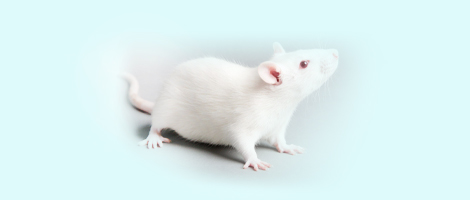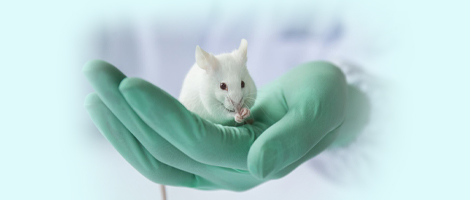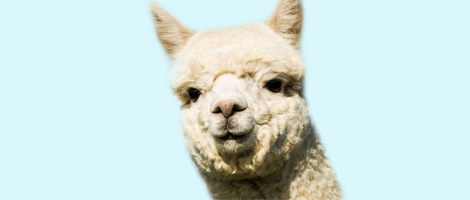













实验动物与比较医学 ›› 2025, Vol. 45 ›› Issue (5): 642-648.DOI: 10.12300/j.issn.1674-5817.2025.036
收稿日期:2025-03-04
修回日期:2025-06-09
出版日期:2025-10-25
发布日期:2025-10-23
作者简介:聂永强(1989—),男,博士,实验师,研究方向:基因编辑小鼠模型和生物净化。E-mail:yongqiang008@sjtu.edu.cn
NIE Yongqiang( ), WANG Zhaoxia(
), WANG Zhaoxia( )(
)( )
)
Received:2025-03-04
Revised:2025-06-09
Published:2025-10-25
Online:2025-10-23
Contact:
WANG Zhaoxia (ORCID: 0000-0002-6827-2083), E-mail: zhaoxiaw@sjtu.edu.cn摘要:
基因编辑小鼠模型作为现代生物医学研究的核心工具,在疾病机制解析、药物研发及基因功能研究等领域发挥着不可替代的作用。然而,高校在基因编辑小鼠的制备、饲养和数据分析过程中常面临技术复杂、资源分散、管理效率低下等挑战。为解决上述问题,构建整合全链条技术服务与智能化管理体系的基因编辑小鼠一站式服务平台,已成为高校实验动物中心突破现有困境的必然选择。该平台须具备基因编辑小鼠构建、繁殖扩群、生物净化、品系保种、濒危品系拯救等核心功能,形成覆盖“靶点设计-模型构建-种群扩繁-遗传质量控制-生物样本保存”的全流程技术服务体系,以促进高校实验动物中心从提供“单一技术服务”向提供“全流程解决方案”的战略转型。以上海交通大学实验动物中心为例,该中心通过技术优化解决了显微操作成功率低与基因型鉴定缺乏标准化操作流程等技术缺陷,通过可追溯性管理和信息共享解决了课题组小鼠品系管理混乱与重复构建造成的科研经费浪费等问题,通过系统性整合与优化技术服务解决了以往服务体系碎片化可能导致的效率低下、资源浪费、协作困难等问题。本文从集约化管理、服务能力建设和支撑体系建设三个方面,系统探讨了基因编辑小鼠服务平台的建设路径与实践经验,以期为高校同类平台的建设提供可借鉴的管理模式和实施路径。
中图分类号:
聂永强,王朝霞. 高校基因编辑小鼠一站式服务平台建设的探索与实践:以上海交通大学为例[J]. 实验动物与比较医学, 2025, 45(5): 642-648. DOI: 10.12300/j.issn.1674-5817.2025.036.
NIE Yongqiang,WANG Zhaoxia. Exploration and Practice of Building a One-Stop Service Platform for Gene-Edited Mice in University Animal Centers: A Case Study of Shanghai Jiao Tong University[J]. Laboratory Animal and Comparative Medicine, 2025, 45(5): 642-648. DOI: 10.12300/j.issn.1674-5817.2025.036.
| [1] | VAN DER WEYDEN L, JONKERS J, ADAMS D J. The use of CRISPR/Cas9-based gene editing strategies to explore cancer gene function in mice[J]. Curr Opin Genet Dev, 2021, 66:57-62. DOI:10.1016/j.gde.2020.12.005 . |
| [2] | OH J, PARK C, KIM S, et al. High levels of intracellular endotrophin in adipocytes mediate COPII vesicle supplies to autophagosome to impair autophagic flux and contribute to systemic insulin resistance in obesity[J]. Metabolism, 2023, 145:155629. DOI:10.1016/j.metabol.2023.155629 . |
| [3] | WAYNE BARBEE R, TURNER P V. Incorporating laboratory animal science into responsible biomedical research[J]. ILAR J, 2019, 60(1):9-16. DOI:10.1093/ilar/ilz017 . |
| [4] | 刘苗苗, 谢忠忱, 唐倩倩, 等. 清华大学实验动物中心[J]. 实验动物与比较医学, 2024, 44(2):238-239.DOI:10.12300/j.issn.1674-5817.2024.020 . |
| LIU M M, XIE Z C, TANG Q Q, et al. Tsinghua University experimental animal center[J]. Lab Anim Comp Med, 2024, 44(2):238-239. DOI:10.12300/j.issn.1674-5817.2024.020 . | |
| [5] | 梅露丹, 任艳蓉, 李卓霏, 等. 云南大学实验动物中心[J]. 实验动物与比较医学, 2024, 44(3):339-340.DOI:10.12300/j.issn.1674-5817.2024.082 . |
| MEI L D, REN Y R, LI Z F, et al. Yunnan university experimental animal center[J]. Lab Anim Comp Med, 2024, 44(3):339-340. DOI:10.12300/j.issn.1674-5817.2024.082 . | |
| [6] | 张彩勤. 空军军医大学实验动物中心[J]. 实验动物与比较医学, 2023, 43(2):225-226. DOI:10.12300/i.issn.1674-5817.2023.049 . |
| ZHANG C Q. Air Force Medical University laboratory animal center[J]. Lab Anim Comp Med,2023, 43(2):225-226. DOI:10.12300/i.issn.1674-5817.2023.049 . | |
| [7] | 张倩,邓青秀,蔡林. 国内普通高校实验动物从业人员职业健康风险防控概述[J]. 实验动物与比较医学, 2025, 45(2):206-213. DOI:10.12300/j.issn.1674-5817.2024.126 . |
| ZHANG Q, DENG Q X, CAI L. Review on occupational health risk prevention and control for laboratory animal practitioners in Chinese general universities[J]. Lab Anim Comp Med, 2025, 45(2):206-213. DOI:10.12300/j.issn.1674-5817.2024.126 . | |
| [8] | 马倩, 戚梦婷. 上海交通大学实验动物中心[J]. 实验动物与比较医学, 2023, 43(4):457-458. DOl: 10.12300/j.issn.1674-5817.2023.084. |
| MA Q, QI M T. Shanghai Jiaotong university experimental animal center[J]. Lab Anim Comp Med, 2023, 43(4):457-458. DOl: 10.12300/j.issn.1674-5817.2023.084. | |
| [9] | EVERETTE K A, NEWBY G A, LEVINE R M, et al. Ex vivo prime editing of patient haematopoietic stem cells rescues sickle-cell disease phenotypes after engraftment in mice[J]. Nat Biomed Eng, 2023,7(5):616-628. DOI: 10.1038/s41551-023-01026-0 . |
| [10] | 邹爽, 孟德豪, 李贺年, 等. 基于CRISPR/Cas9技术的哺乳动物细胞基因敲入的策略优化与效率提升[J]. 生命的化学, 2024, 44(8):1433-1441. DOI: 10.13488/j.smhx.20230761 . |
| ZOU S, MENG D H, LI H N, et al. Strategy optimization and efficiency improvement of gene knock-in in mammalian cells based on CRISPR/Cas9 technology[J]. Chem Life, 2024, 44(8):1433-1441. DOI: 10.13488/j.smhx.20230761 . | |
| [11] | GAJ T, GERSBACH C A, C F Ⅲ BARBAS. ZFN, TALEN, and CRISPR/Cas-based methods for genome engineering[J]. Trends Biotechnol, 2013,31(7):397-405. DOI: 10.1016/j.tibtech.2013.04.004 . |
| [12] | GUAN M, BOGANI D, MARSCHALL S, et al. In vitro fertilization in mice using the MBCD-GSH protocol[J]. Curr Protoc Mouse Biol, 2014, 4(2):67-83. DOI:10.1002/9780470 942390.mo140059 . |
| [13] | 王芊芊, 刘迪文, 洪胜辉, 等. 小鼠生物净化技术平台的设计、运行及维护[J]. 中国比较医学杂志, 2023,33(8):122-126. DOI:10.3969/j.issn.1671-7856.2023.08.016 . |
| WANG Q Q, LIU D W, HONG S H, et al. Design, operation, and maintenance of the technology platform of mouse rederi vation[J]. Chin J Comp Med, 2023,33(8):122-126. DOI:10.3969/j.issn.1671-7856.2023.08.016 . | |
| [14] | 李娜, 杨秋龙, 李思璧, 等. 模型动物生物净化方法的探讨[J]. 上海交通大学学报(农业科学版), 2014, 32(5):84-88, 94. DOI: 10.3969/J.ISSN.1671-9964.2014.05.015 . |
| LI N, YANG Q L, LI S B, et al. Study on biological re-derivation for model animal[J]. J Shanghai Jiao Tong Univ Agric Sci, 2014, 32(5):84-88, 94. DOI: 10.3969/J.ISSN.1671-9964.2014.05.015 . | |
| [15] | 朱莲, 孔彭成, 王美珊, 等. 剖宫产与体外授精技术在小鼠生物净化中的应用[J]. 实验动物与比较医学, 2013, 33(3):218-221. DOI:10.3969/j.issn 1674-5817.2013.03.011 . |
| ZHU L, KONG P C, WANG M S, et al. Application of caesarean and in vitro fertilization for bio-cleansing in mice[J]. Lab Anim Comp Med, 2013, 33(3):218-221. DOI:10.3969/j.issn 1674-5817.2013.03.011 . | |
| [16] | AGCA Y, AGCA C. Cryopreservation of mouse sperm for genome banking[J]. Methods Mol Biol, 2021, 2180:401-412. DOI:10.1007/978-1-0716-0783-1_17 . |
| [17] | LARMAN M G, GARDNER D K. Ultrarapid vitrification of mouse oocytes and embryos[J]. Methods Mol Biol, 2014, 1092:153-165. DOI:10.1007/978-1-60327-292-6_10 . |
| [1] | 岳君佳俞, 张蔚. 蝶类演化研究体系的构建与分析进展[J]. 实验动物与比较医学, 2025, (): 1-10. |
| [2] | 张滢, 彭自伟, 杨畅, 王晶, 赵红芳, 陈根, 赵红业, 魏红江. 版纳微型猪近交系同种异体肾移植技术体系的建立[J]. 实验动物与比较医学, 2025, 45(5): 623-633. |
| [3] | 孙强. 类器官不是器官[J]. 实验动物与比较医学, 2025, 45(5): 649-654. |
| [4] | 刘巍, 许中衎, 侯丰田, 张心妍, 乔涵, 马丽颖. 2024年各类实验动物设施检测机构的动物照度检测能力评价报告[J]. 实验动物与比较医学, 2025, 45(5): 634-641. |
| [5] | 欧美珍, 李泳锋, 温莎, 廖舟翔, 黄雪静, 何敏, 杨丽超. 树鼩Vasorin单克隆抗体的制备及其应用探索[J]. 实验动物与比较医学, 2025, 45(5): 611-622. |
| [6] | 罗一凡, 张臻玮, 梅璐, 史叶萍, 邢艺彤, 张泽奇, 李楚欣, 韩春霞, 杨平顺, 陈秋生. 特络细胞介导肥胖症大鼠膏摩寡肽中草药复合制剂的减肥作用及其机制[J]. 实验动物与比较医学, 2025, 45(5): 551-560. |
| [7] | 王晗玥, 陈嘉玮, 高湘滨, 罗威, 刘素宁. 模式生物黑腹果蝇心侧体功能的研究概述[J]. 实验动物与比较医学, 2025, (): 1-14. |
| [8] | 刘月琴, 薛卫国, 王淑友, 申耀华, 贾术永, 王广军, 宋晓晶. 探头式激光共聚焦成像技术用于小鼠消化道组织形态特征分析[J]. 实验动物与比较医学, 2025, 45(4): 457-465. |
| [9] | 郑卿勇, 杨冬华, 马智超, 周姿余, 陆洋, 王晶宇, 邢丽娜, 康迎英, 杜莉, 赵春香, 狄宝山, 田金徽. 动物实验系统评价与Meta分析报告的规范撰写建议[J]. 实验动物与比较医学, 2025, 45(4): 496-507. |
| [10] | 王庭君, 罗浩, 陈琦. 基于人工智能的实验动物中心信息化升级及应用实践[J]. 实验动物与比较医学, 2025, 45(4): 473-482. |
| [11] | 王娇祥, 张璐, 陈姝含, 角德灵, 赵恒, 魏太云, 郭建雄, 徐凯祥, 魏红江. GTKO/hCD55基因编辑异种器官移植供体猪的构建及功能验证[J]. 实验动物与比较医学, 2025, 45(4): 379-392. |
| [12] | 秦超, 李双星, 赵婷婷, 蒋晨晨, 赵晶, 杨艳伟, 林志, 王三龙, 文海若. 药物安全评价用SD大鼠90 d喂养试验的背景数据研究[J]. 实验动物与比较医学, 2025, 45(4): 439-448. |
| [13] | 刘鹍, 兰青, 易兵, 谢晓婕. 药物非临床生殖毒性试验中动物妊娠的主要难点及应对方法[J]. 实验动物与比较医学, 2025, 45(4): 449-456. |
| [14] | 孙强. 非动物实验替代知多少[J]. 实验动物与比较医学, 2025, 45(4): 508-514. |
| [15] | 焦青贞, 吴桂华, 唐雯, 樊帆, 冯凯, 杨春响, 乔建, 邓素芳. 暖通系统暂停送风下实验动物设施氨浓度的动态监测与分析[J]. 实验动物与比较医学, 2025, 45(4): 490-495. |
| 阅读次数 | ||||||
|
全文 |
|
|||||
|
摘要 |
|
|||||